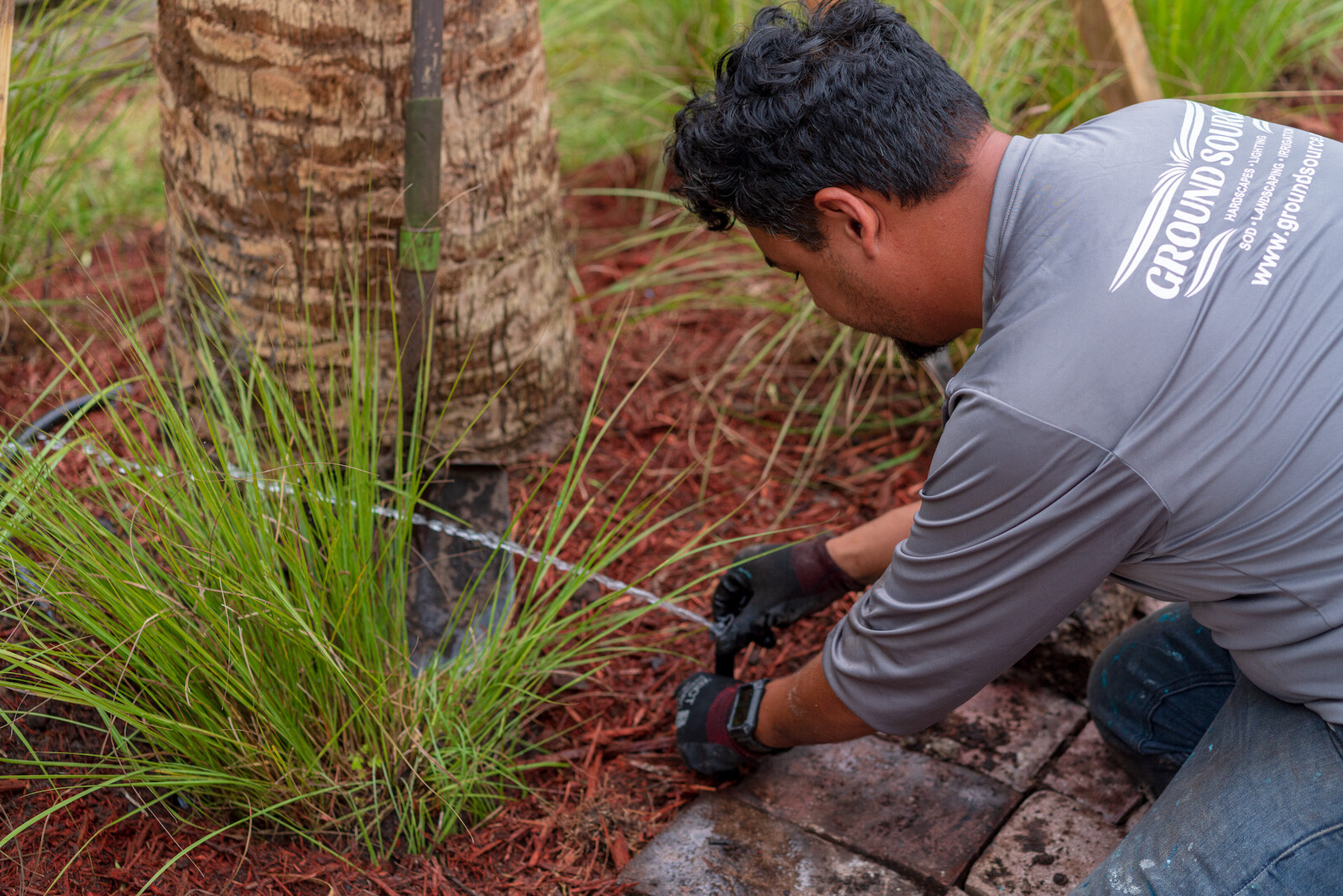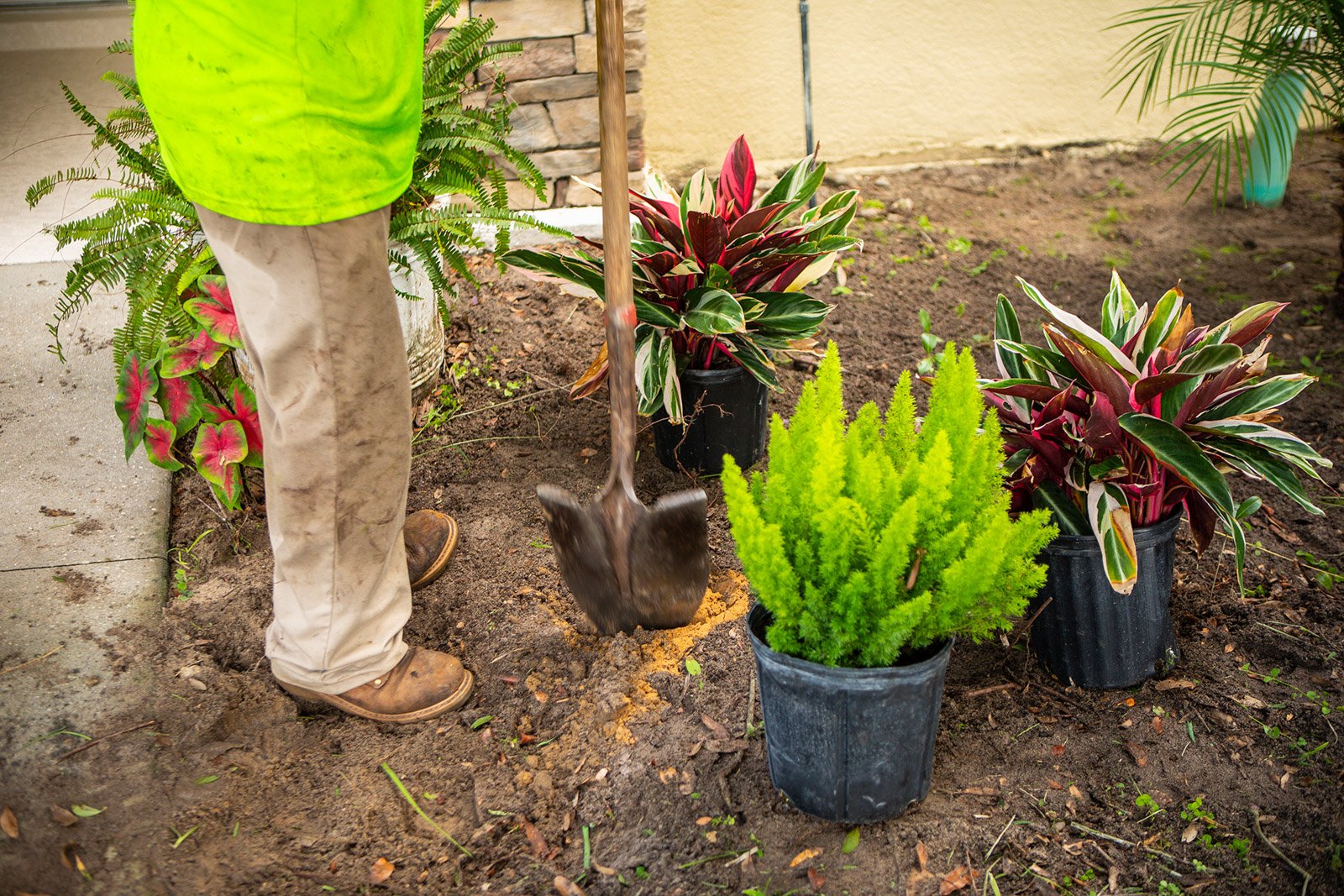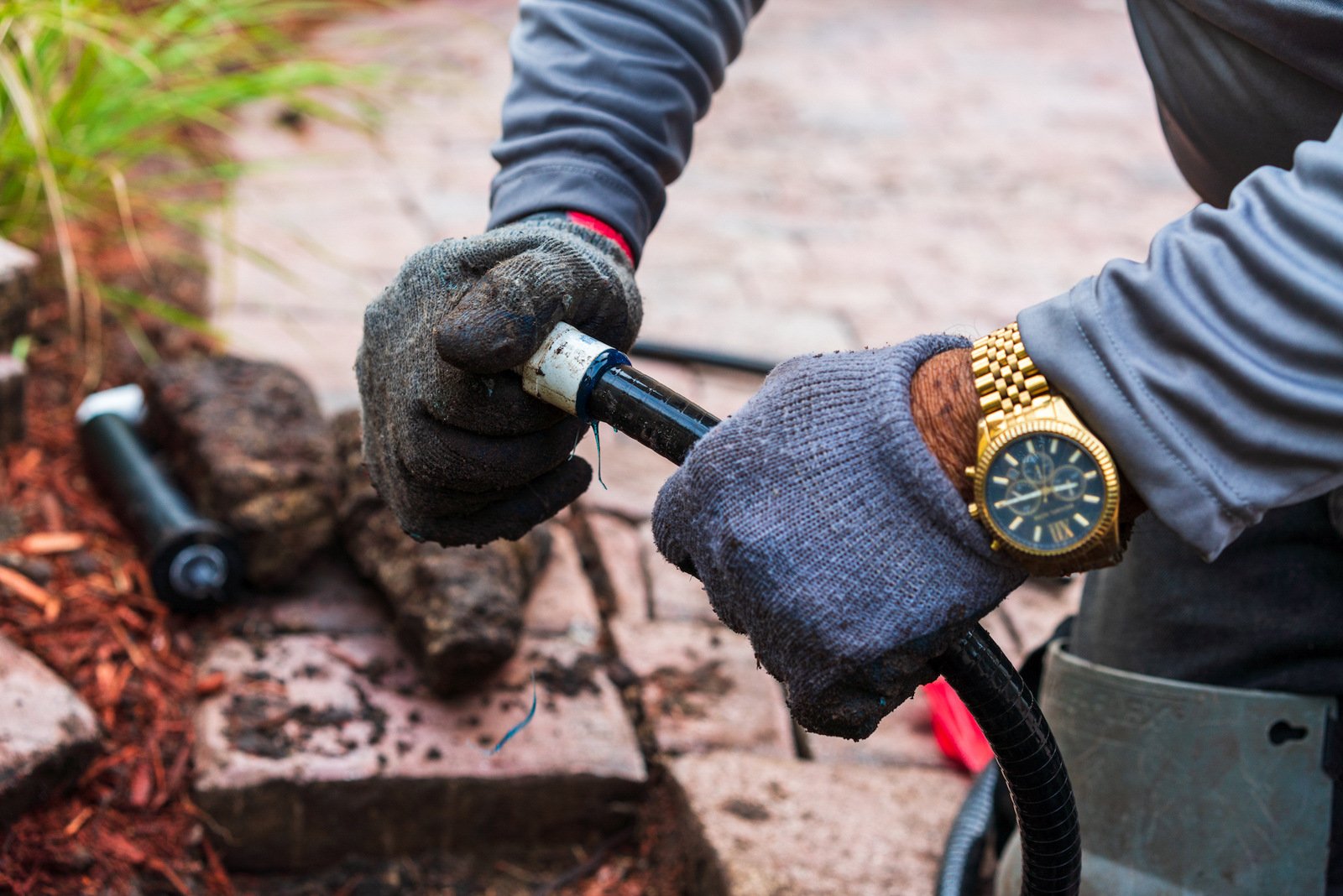If you’re any kind of a handy person, you know a drip is usually bad news. Leaky faucet. Leaky roof. Busted toilet. Grab the tool box. Ugh.
Not this time. Installing a drip irrigation system causes drips. But it’s a good thing — a great way to water your plants.
Should you tackle DIY drip irrigation installation? Will it make you swear as much as that last leaky roof repair did?
Leave your tool box for now and let’s take a look.
What Are the Benefits of Drip Irrigation for Florida Landscapes?
Unlike a typical sprinkler system that sprays water from irrigation heads, drip irrigation uses hoses pierced with tiny holes that allow small quantities of water to trickle slowly into the soil.
- It saves water. Drip irrigation uses less water than typical sprinkler systems because it’s applied directly to the plants. There’s no water waste from evaporation because water isn’t spraying into the air.
- It’s healthier for plants. A drip irrigation system delivers all the water to your plants’ roots, not their leaves. Wet leaves encourage fungal diseases that can kill your plants.
- It prevents soil erosion and nutrient runoff. That gentle dripping doesn’t disturb the soil.
- It’s adaptable. Gardens are often changing. A few more feet added to the planting bed here, a few more flowers over there. When changes happen, a drip irrigation system is easily modified for your new plan.
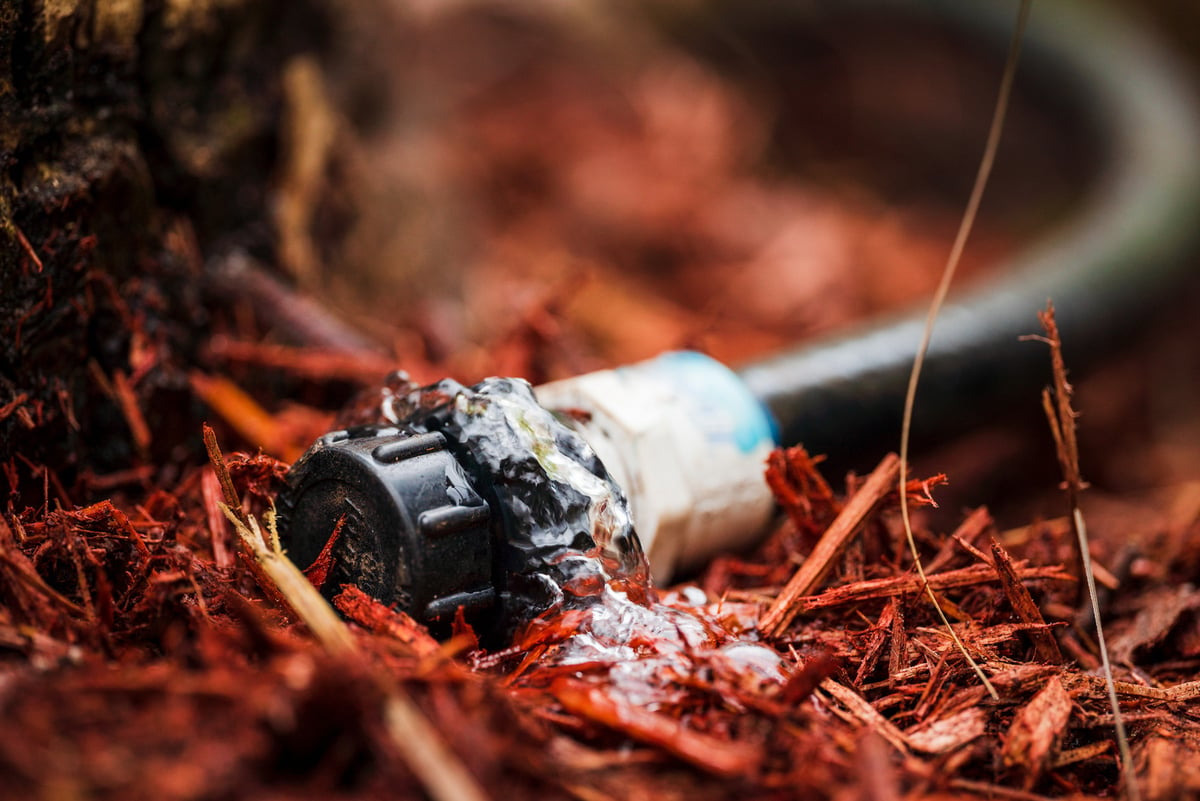
Installing a Drip Irrigation System: Here’s What Happens
Drip irrigation consists of a lot of tubing fitted with tiny plastic emitters that allow the water to drip out. The tubing snakes around and among your plants and drips water into the soil at the roots.
Installing a drip irrigation system yourself? You can buy the tubing either pre-punched, with emitters already installed every 18 inches, or unperforated, where you punch the holes and attach the emitters yourself. 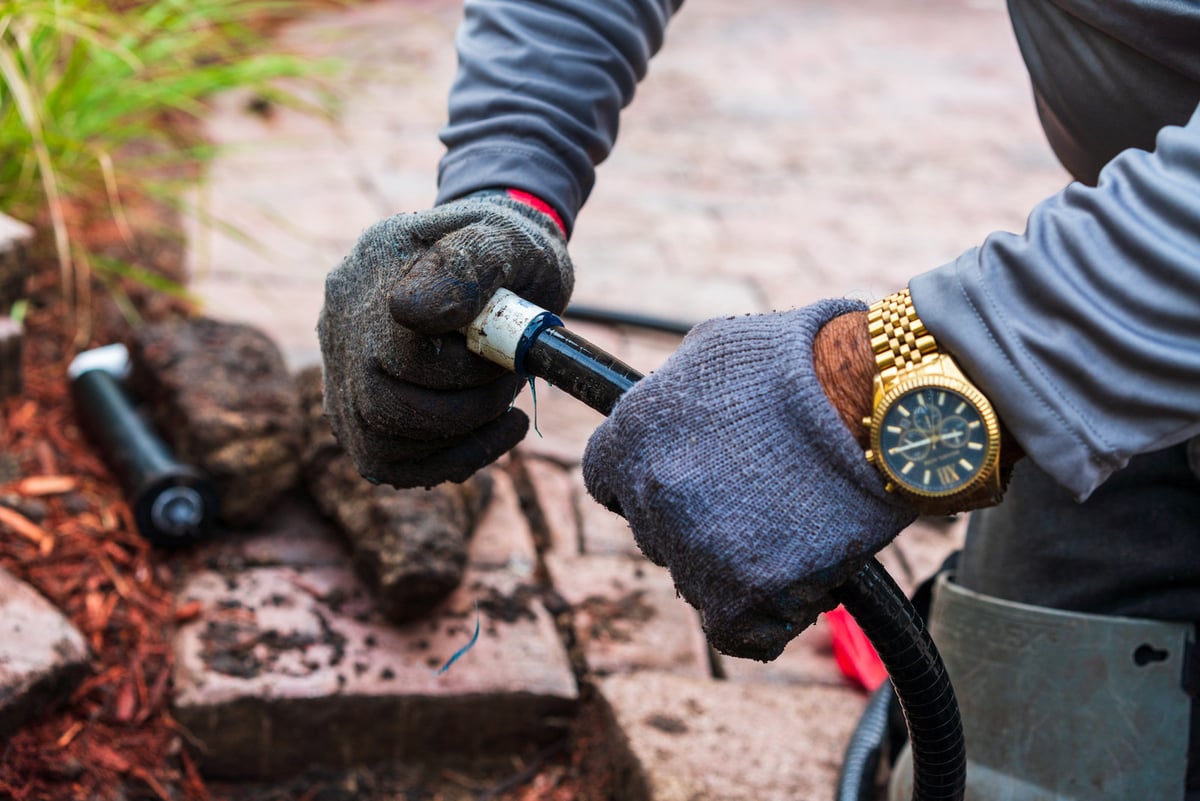 You can buy different types of emitters for different kinds of plants. Once you map out your plan, you can buy the attachments you need.
You can buy different types of emitters for different kinds of plants. Once you map out your plan, you can buy the attachments you need.
The hoses are installed on top of your soil, then covered with mulch to hide them. Stay on top of that mulch. If your mulch gets thin, the sun can dry out and crack the plastic tubing.
Also, tools like your lawn edger can cut the tubes if they’re exposed. So a little extra care is needed to keep everything tucked nicely away where it’s supposed to be.
You can find kits and individual components online and at home centers, garden centers, and plumbing suppliers.
Kits include directions and some offer video tutorials.
Doesn’t sound too bad. So, why leave it to the pros? A few reasons:
Why Should you Hire a Professional to Install a Drip Irrigation System?
You’ll Get a Detailed Plan
Professional drip irrigation installation services will draw up a detailed blueprint to make sure all of your plants are watered, and each plant gets just the right amount of water.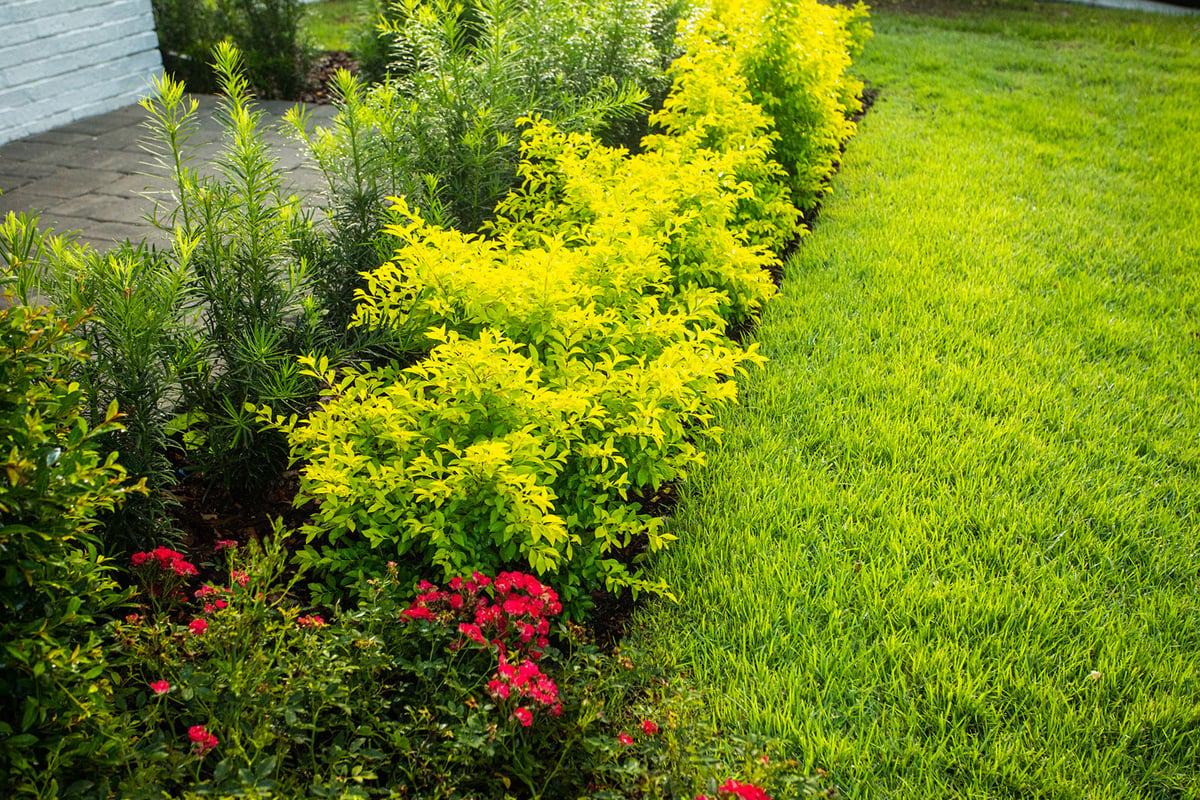
Shrubs need more drip heads than flowers. Trees need even more.
If you install a drip irrigation system yourself, you mess it up, and your plants drown or die of thirst, why bother?
Pros Have Unique Irrigation Solutions
Professional drip irrigation installation services have great ideas, like running tubes up through the bottoms of your planters that tie into your irrigation system. Tiny emitters connected to the tubes water your plants — no more pesky hand watering!
Drip Irrigation Systems Need to be Maintained
Once you’re done installing a drip irrigation system, you can’t just ignore it and hope for the best.
Hoses eventually need repair or replacement. They require maintenance, too. Filters and emitters can get clogged. Hoses can accumulate debris.
Your drip irrigation system will need to be flushed out once in a while. 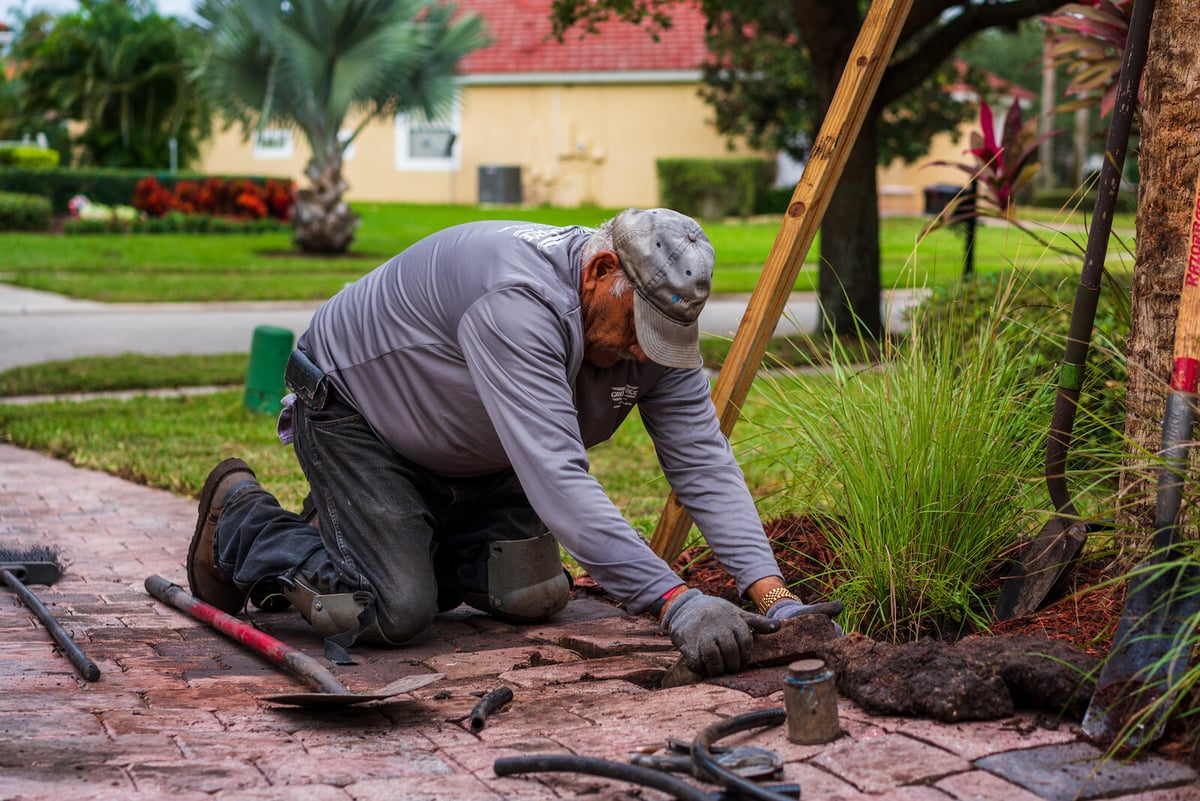 Install a drip irrigation system yourself and when something goes wrong, you’ll spend your precious Saturday crouched in your landscaping fiddling with hoses, looking for problems, and watching your neighbor enviously as he heads out for a day of fishing.
Install a drip irrigation system yourself and when something goes wrong, you’ll spend your precious Saturday crouched in your landscaping fiddling with hoses, looking for problems, and watching your neighbor enviously as he heads out for a day of fishing.
Or, call your Orlando drip irrigation installation services and they’ll fix it while you relax by the pool.
Ready for a Drip Irrigation System in Orlando? Trust Ground Source
Once your drip irrigation system is installed, it’s practically invisible. But that doesn’t mean you can just ignore it.
Drip irrigation needs routine maintenance, just like your lawn irrigation system.
Trust Ground Source for expert drip irrigation installation in Orlando, and for the routine inspections to make sure the pressure is right, emitters are working properly, and your controller is set for the right season.
We’re irrigation experts, but our skills don’t stop there. We’re with you every step of the way as you plan your perfect outdoor space.
Sod, irrigation, landscape design: Let us transform your yard from an embarrassing eyesore to a place you spend every spare minute.
Are you ready to enjoy the vibrant, impressive yard you've always wanted? Request a quote today! We’ll help you review your options and then transform your property.
Frequently Asked Questions About Drip Irrigation
1. Is drip irrigation better than sprinklers for plant beds?
Yes. Drip irrigation delivers water directly to plant roots, reducing evaporation and minimizing the risk of fungal diseases common in Florida’s humid climate.
2. Can I install a drip irrigation system myself?
DIY is possible for small garden beds, but larger or more complex landscapes benefit from professional design and installation.
3. How long does a drip irrigation system last?
With proper maintenance, drip irrigation systems can last over 10 years. Routine inspections help prevent clogs and tubing damage.
4. How much does professional drip irrigation installation cost in Orlando?
Costs vary based on yard size and plant needs, but Ground Source provides transparent estimates with no hidden fees.





